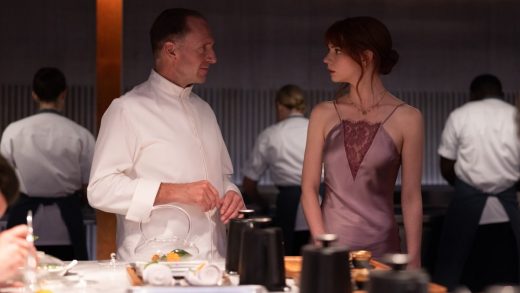
The inner-city Christchurch corner site at Montreal and Gloucester Streets has sat largely empty for many years.
Now finally, a standout jewel of two high-end contemporary villas is about to be added to the garden city’s post-quake crown.
Designed in 2016 after a long gestation period, the two homes opposite the Christchurch Art Gallery are almost ready to be unveiled, with one already completed and on the market at 47 Gloucester Street.
Tobin Smith, director of Common Architecture, has always been aware of the sensitivity required for the project because of its highly visible location near public buildings of importance.
Harcourts
Officially with the address of 47 Gloucester St, the completed villa sits opposite the Christchurch Art Gallery. One of two on the site built by COMMON Architects, it occupies a spot which has been neglected since the earthquake.
Harcourts
Interior finishes for the project have been chosen by Christchurch interior designer Davinia Sutton.
Designing the homes in a way that they blend with both public and private surrounding architecture, as well as fitting in with Christchurch’s feel, was of paramount importance, he says.
“The influence for this project is a more playful adaptation of what we call ‘the Christchurch style’,” says Smith.
“The Christchurch style is probably characterised, or known for strong gable forms, basically, because as a city, much of our architecture was Victorian and Gothic, we had really stark roof angles.”
Harcourts
The louvre facade will provide the occupant with the ability to totally control the amount of light let into the structure, down to the degree by adjusting the angles of the louvres.
“We’re trying to do something a little bit playful in that we’re taking that recognisable form and we’re perching it over a stone base and cantilevering it, as opposed to grounding it.
“I wouldn’t say that the architecture of the building is informed by the Art Gallery at all, it’s more informed by the familiar domestic building forms that you see around Christchurch.”
Grounded in a base of local schist stone, the cantilevered roof appears to float. But there’s function in the form, for example, louvres that cover the facade facing the art gallery and above skylights in the home, can have their angles adjusted to chase, shield or block the sun completely.
Harcourts
A hidden surprise in the centre of the structure, a central internal garden receives light from a skylight above.
Meanwhile, from an aesthetic perspective, the dynamic and changing lines of the louvre facade offer an exterior that might not be inspired by the Art Gallery, but certainly seem to be an architectural work of art.
All details have been considered, with Smith and his team consulting with the Christchurch City Council down to fine details, such as where cars can enter the properties most seamlessly.
With the western home’s custom-concealed garage opening directly on to Gloucester Street, design efforts have been made to blend this utility, so it feels “intrinsically part of the structure, rather than just another garage door”.
Harcourts
One of two villas on the property, the eastern villa (shown above) is now for sale.
The dwellings are 278m² and 273m² respectively, with the western dwelling being slightly larger than the east.
The plan was initially for both homes to be completed at the same time, but due to delays in the arrival of materials and the availability of labour, the developers made the choice to complete one home and then the other.
While the homes are almost a mirror image of each other and offer the same level of high-tech and high-end furnishings, the interior decor for the project, chosen by award-winning interior designer Davinia Sutton, seems to create an overall harmonious feeling of yin and yang.
In the western home still being finished, a “muted, neutral palette” reigns throughout. In the living room, a white marble fireplace reaches to the ceiling.
Whereas in the eastern home for sale, a dark, sensitive and rejuvenating colour palette is served. No expense has been spared and a theme of European craftsmanship and luxury prevails.
“When you step inside, you recognise the absolute impeccable attention to detail that’s been met throughout the home; the parquetry, flooring, the Polyform Studio Italia kitchens, the level of the cabinetry, the tiling that’s been imported from Italy,” says listing agent Simon Herbert of Harcourts.
Harcourts
This wallpaper is so high-value that it required its own business class seat to travel in. Close-up, Herbert describes the velvet finish and a shimmering, pearlescent reflect as “simply stunning.”
“The wallpaper used in the living room, master suite and gallery room was hand-printed in France and flown to New Zealand in its own business class seat. Due to the value of the items, it was too great a risk having them flown as cargo.”
“I believe it’s about $2500 a roll and there were about 10 rolls used on one wall.”
“The tiles throughout the home have all been carefully selected and imported from Italy with a six-month wait for these to arrive for the build.”
Harcourts
The eastern home’s kitchen is poliform and features Italian tiles.
“So it’s just a collection of really, really high-end bespoke design elements, which have all been incorporated together, which make it just a magnificent build.”
“The quality of the craftsmanship, all the artisans who have collaborated on the project over the last few years, have really made it what it is today. It’s such a unique design.”
Well-equipped for a professional desiring a home office, the unit for sale has three bedrooms and a fourth flexible space in a separate wing looking out onto the Art Gallery, which Smith thinks would make a fantastic home studio.
Harcourts
Looking out to the Art Gallery, this bonus space could be an office or fourth bedroom.
The build was far from “smooth sailing”: The design process was initially begun by another developer, before being taken over in 2018 and completed by the current owners. It involved surviving “an active critique” over time between the architectural team, the developers and the Christchurch City Council.
“When you have a developer or a client that walks away from a project, unfortunately most of the time that project then goes and sits in the drawer full of good ideas and never gets recognised,” says Smith. “We’re very thankful that the client saw the value in actually building the development.”
“Personally speaking, I think it is one of the most significant developments that has happened in the CBD since the earthquakes,” says Herbert.
Harcourts
One of two high-end villas, this home designed by COMMON architecture nearly didn’t make it off the drawing board due to the original developer bailing on the project.
The eastern villa, now listed, has views over the Art Gallery and Cranmer Square, whilst the western villa has views over Hagley Park.
The exact build cost for the property is not yet known, though it has been confirmed that it did escalate due to the cost of materials. The eastern villa, now for sale and going to auction, is best considered by those with a few spare million in their pocket, and who want to live in the city centre.
“The audience that we are appealing to is someone who has an appreciation for the finer aspects of the architecture and the build,” says Herbert.


